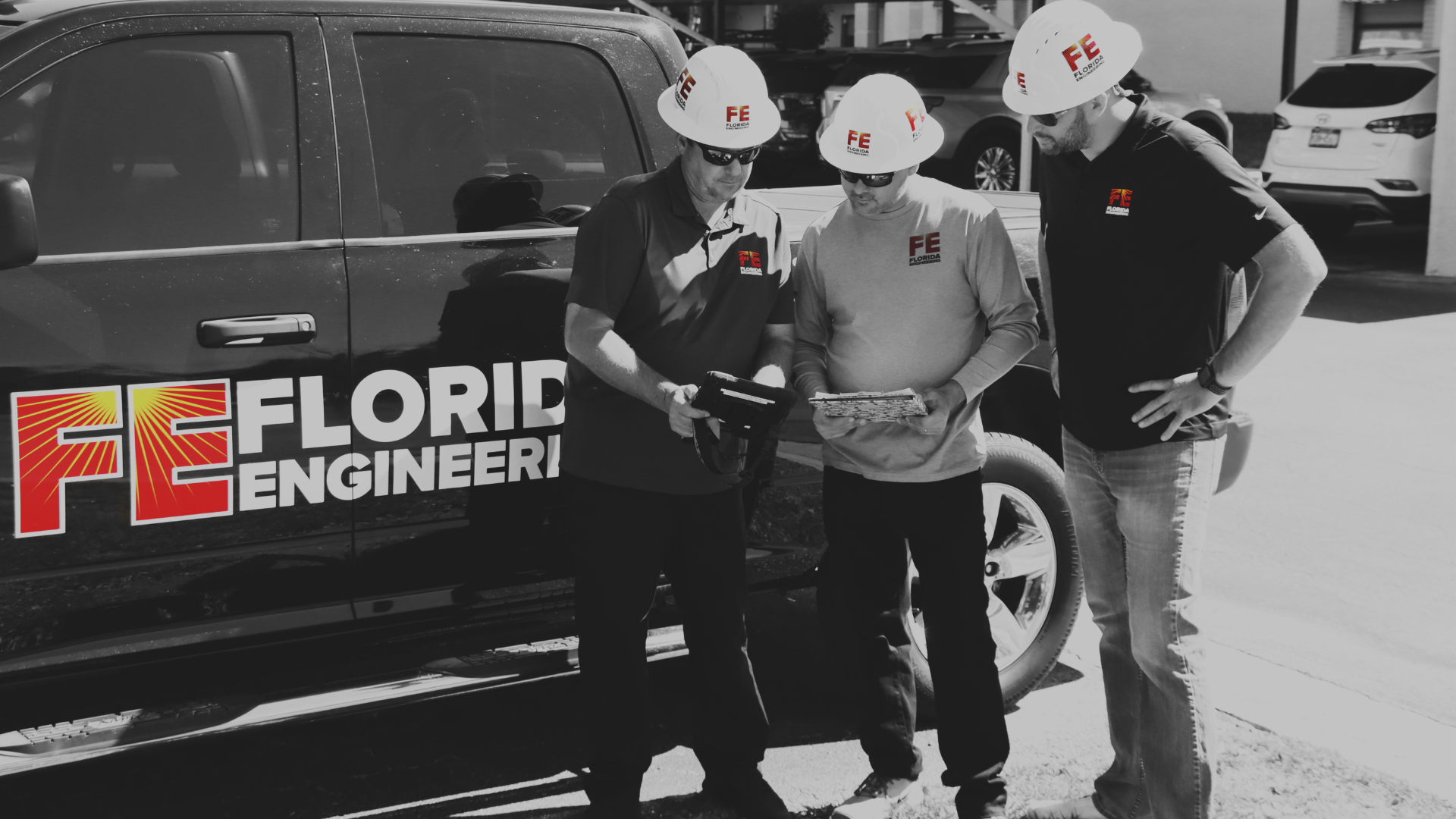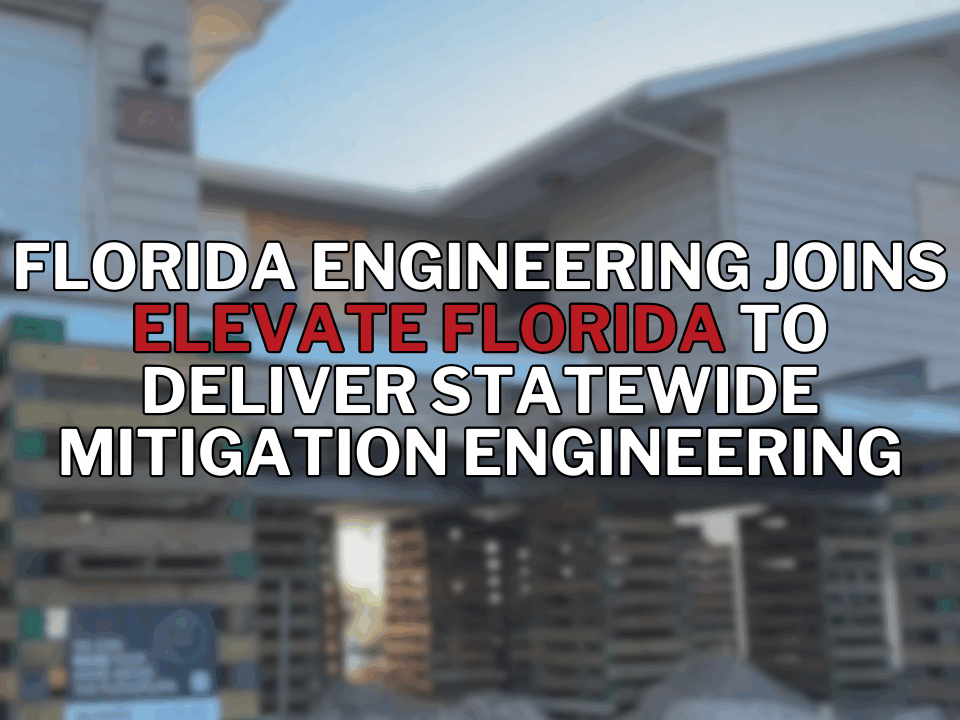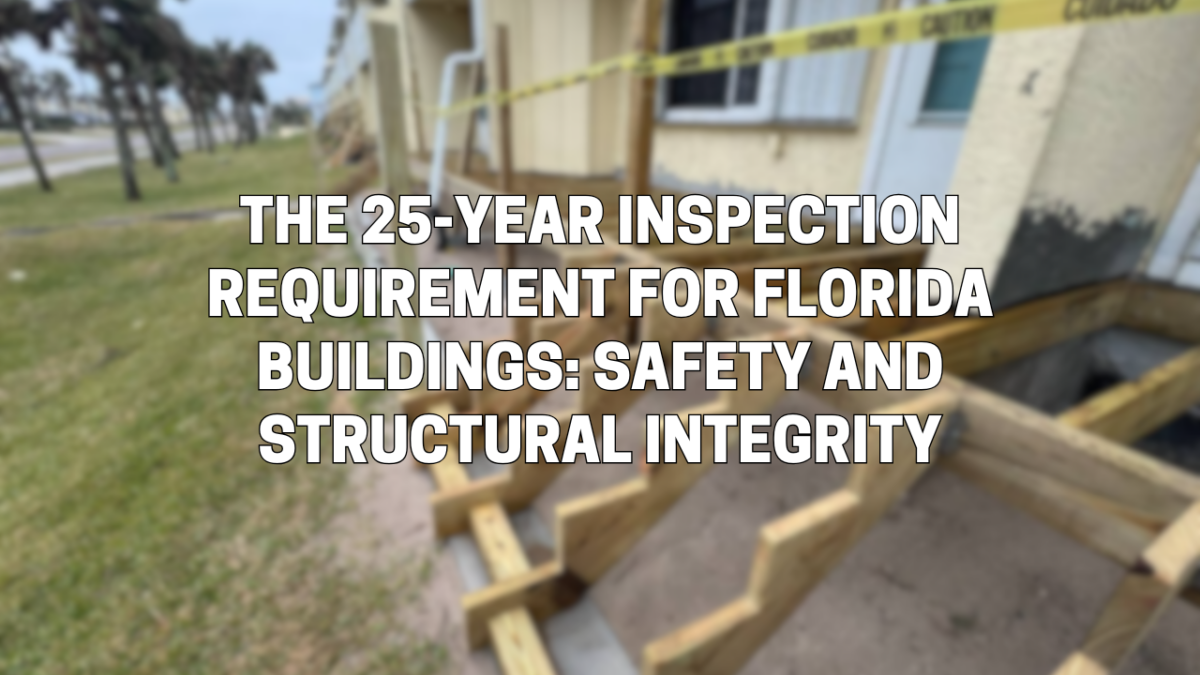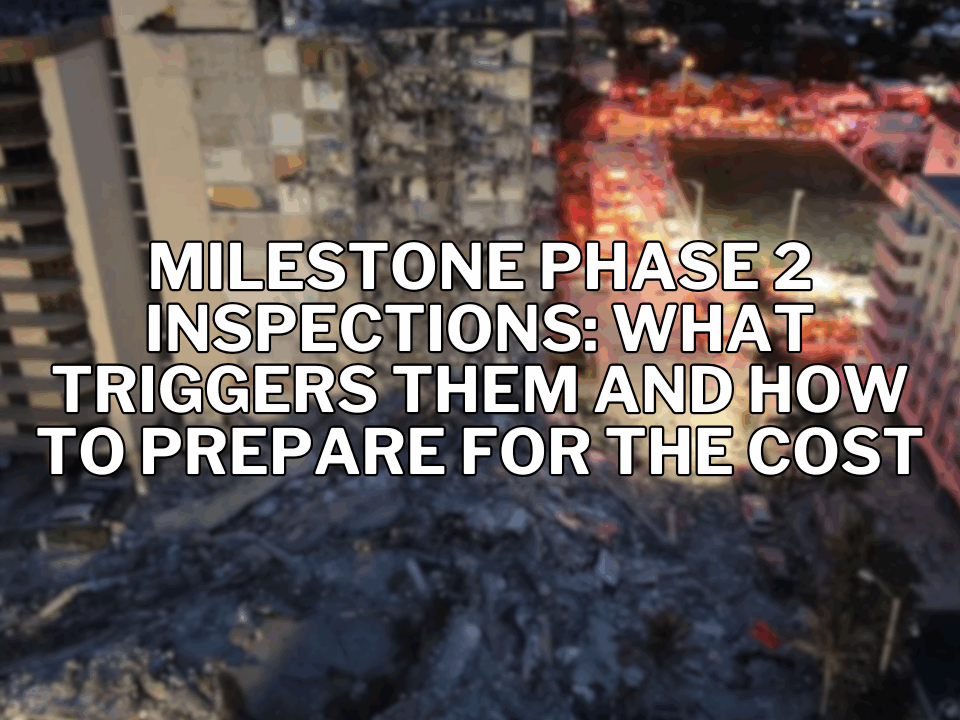As Florida’s buildings age, safety and structural integrity have become critical priorities. Following the tragic collapse of the Champlain Towers South in Surfside, which underscored the potential risks of aging infrastructure, Florida introduced sweeping reforms with Senate Bill 4-D in 2022. These regulations were further refined in 2023 with the passage of Senate Bill 154, the “Glitch Bill,” which adjusted inspection requirements, timelines, and clarified procedural aspects to better serve Florida’s unique structural safety needs. This article delves into the specifics of the 25-year and 30-year inspection requirements, focusing on their role in ensuring building safety in Florida in 2024.
Table of Contents
- Background: The Purpose Behind 25-Year and 30-Year Inspections
- What Buildings Are Subject to Inspections?
- Inspection Process Under SB 154
- Structural Integrity Reserve Studies (SIRS)
- Reserve Funding and Financial Responsibilities
- Implications of Non-Compliance
- Conclusion: Balancing Flexibility with Safety
Background: The Purpose Behind 25-Year and 30-Year Inspections
The collapse of the Champlain Towers in Surfside, Florida, in 2021 prompted legislative changes focused on enhancing safety standards for older residential buildings. To ensure structural stability over time, Senate Bill 4-D, passed in 2022, mandated milestone inspections for buildings three stories or more. However, implementing these requirements highlighted several logistical and regulatory challenges. To address these, Senate Bill 154, the “Glitch Bill,” was introduced, streamlining inspection guidelines and extending some deadlines, thereby helping property owners and associations meet safety standards effectively and affordably.
What Buildings Are Subject to Inspections?
Senate Bill 154 refines which properties must comply with Florida’s milestone inspection requirements, setting the following key criteria:
- Building Type: Milestone inspections apply specifically to residential condominiums and cooperatives of three or more stories.
- Age of the Building: All qualifying buildings must complete a milestone inspection within 30 years from receiving their certificate of occupancy, regardless of proximity to the coastline.
- Exceptions: Certain government-owned buildings, small structures under 3,500 square feet, single-family homes, and two-family dwellings remain exempt.
This clarified approach removes distinctions based on distance from the coastline, focusing solely on building height and age to determine eligibility for inspection.
Inspection Process Under SB 154
Under SB 154, the milestone inspection process remains a two-phased approach but includes important adjustments for flexibility:
- Phase One: Visual Assessment
- A licensed architect or engineer, or a supervised team of professionals, conducts an initial visual inspection of habitable and non-habitable areas, focusing on key structural components. If no signs of substantial deterioration are found, Phase Two is unnecessary.
- Phase Two: In-depth Inspection
- If deterioration is identified, a more detailed Phase Two inspection is conducted. This phase can involve destructive or non-destructive testing to assess the severity of structural issues and determine necessary repairs.
Deadline Extension: The initial deadline for milestone inspections was extended from December 31, 2024, to December 31, 2025, giving property owners more time to comply and organize these assessments.
Structural Integrity Reserve Studies (SIRS)
Alongside milestone inspections, SB 154 introduced adjustments to the Structural Integrity Reserve Studies (SIRS), essential for assessing the reserve funds needed for ongoing maintenance and future repairs. Key updates include:
- Initial Deadline: The deadline for SIRS completion is set for December 31, 2024, with an extension option to December 31, 2026, if circumstances require.
- Revised Requirements: The list of items requiring reserves was adjusted, removing “floors” and “foundations” and adding “exterior doors.” Additionally, items with a remaining useful life exceeding 25 years do not require reserve funding, but associations must still allocate funds for maintenance and repairs.
These adjustments aim to make SIRS more feasible and financially manageable, while still emphasizing the importance of preparedness for future maintenance.
Reserve Funding and Financial Responsibilities
Senate Bill 154 includes important changes in funding expectations to support sustainable maintenance:
- Reserve Requirements: For buildings three stories or higher, all budgets adopted on or after December 31, 2024, must include fully funded reserves for items identified in the SIRS.
- Funding Restrictions: Association members are prohibited from voting to waive or reduce these reserves, and funds designated for specific maintenance items cannot be diverted for other uses.
- Insurance Premium Exemption: Insurance premiums are excluded from calculations for determining if a budget increase triggers a member-initiated substitute budget.
This updated financial framework helps ensure associations have the funds necessary to maintain structural integrity, safeguarding residents and reducing financial strain in the long term.
Implications of Non-Compliance
Failure to comply with these updated requirements can have serious consequences:
- Penalties: Local enforcement agencies have the authority to impose fines and prescribe additional deadlines for compliance.
- Building Safety: If a building is found unsafe due to failure in structural integrity, local authorities can deem it unfit for occupancy, potentially displacing residents until repairs are completed.
- Board Member Liability: SB 154 establishes specific accountability for board members who fail to ensure compliance with inspection and funding requirements, making them liable for any resulting harm.
The addition of board member liability encourages greater adherence to inspection and funding requirements, reinforcing association accountability.
Conclusion: Balancing Flexibility with Safety
Florida’s milestone inspection and reserve funding requirements, updated under SB 154, reflect a well-rounded approach to building safety. By streamlining inspection protocols, clarifying requirements, and allowing for extensions where justified, SB 154 enables property owners and associations to better manage the demands of structural maintenance. For residents, this represents a commitment to building safety and a proactive approach to ensuring structural longevity.
As Florida’s landscape of aging buildings expands, the 25-year and 30-year inspection requirements are key steps in fostering a culture of safety and responsibility, securing the future of Florida’s built environment in 2024 and beyond.
The Building Recertification Experts – Florida’s Condominium Inspections
- Phone: 941-391-5980
- Email: contact@fleng.com
- Address: 4161 Tamiami Trail, Suite 101, Port Charlotte, FL 33952
Connect With Us
Related Services
- Milestone Inspections
- Energy Calculation Services
- 25,30,40,50,60 Year Recertifications
- Pool Engineering Services
- Turnover Inspections
[This above text is for information purposes only and does not constitute engineering or legal advice. Please consult a professional engineer and licensed attorney for any specific answers to your questions about Milestone Inspections and the legal obligations milestone inspections entail.]






